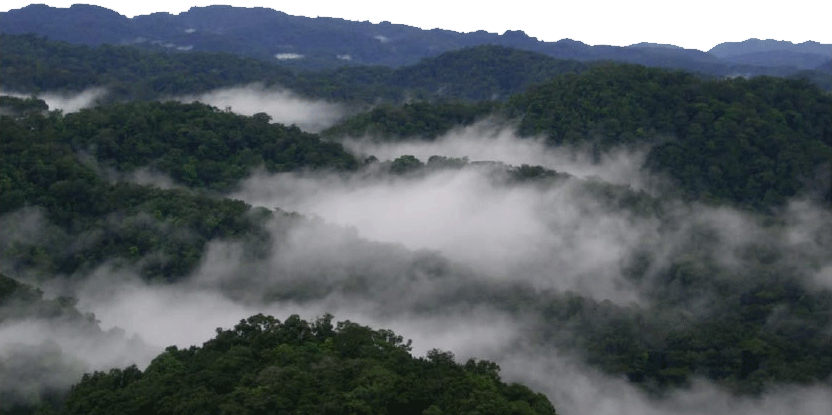
By Greg Cummings
One afternoon in June 2011 a black back mountain gorilla known as Mizano was engaged in battle with a pack of poachers’ dogs in Bwindi Impenetrable National Park in Uganda ….
In an effort to save his hounds, the poacher thrust his spear into Mizano, killing him. A post mortem revealed the gorilla had died a brutal death after his lung was speared through the right shoulder, causing suffocation.
Bwindi hadn’t seen this kind of incident in 15 years and it sent shock waves through the conservation community. Three culprits were arrested the next day, but at the end of their trial two months later the presiding magistrate, citing a lack of evidence, let them off with light fines. Many were outraged by her decision.
While stiffer sentences would certainly have sent a clearer message to the community, the incident did serve to highlight how local attitudes have undergone a paradigm shift in recent years.
Whereas in the past people reacted to reports of illegal poaching in the park with ambivalence, this time the response was one of outrage. The local community was quick to help police and the wildlife authority with their enquiries, which led to the arrests. After the trial the Uganda Wildlife Authority posted the following on their website:

Despite the light sentence given to the gorilla murderers, UWA will continue with her program of massive sensitization and increasing benefits from tourism for the communities to change their attitude and support mountain gorilla conservation as we believe that prevention is always better than cure. Our concern now is to prevent such incidents in the future rather than pursuing this one case further at the expense of deteriorating community-park relations.
The challenge is to mitigate human encroachment and maintain the integrity of protected areas without alienating the people who rely on those areas. Wildlife authorities and international organisations tend to favour top-down, revenue-sharing schemes that attempt to buy them off. But unless the people have a real stake in conservation, the issue will never gain traction.

Take Tarangire National Park in northern Tanzania for example, second only to Ngorongoro Crater for concentrations of wildlife during the driest months. Fed by the permanent waters of Tarangire River which runs through it, this unique ecosystem acts as a sort of sponge, attracting thirsty wildlife from an area ten times its size, including Serengeti and Lake Manyara. Swelling herds of wildebeest, zebras, eland, elephants and oryx gather on the river banks and stay until the onset of the rains.
But the migration cycle is threatened by land acquisition. Large agro-foresty companies are buying up traditional Masai grazing land along the perimeter of the park and converting it for food production, which has led to the loss of five of the nine main migration corridors into Tarangire. If the trend continues the wildlife will go elsewhere, ultimately destroying the park.
Jon Simonson, who owns Tarangire Safari Lodge, is involved in a campaign aimed at turning the situation around. He negotiates contracts with villages outside the park to allow easement across their land for the migrating wildlife.
It’s no easy task convincing the Masai to forgo the large sums on offer but Jon, a naturalised American who’s lived his entire life in Tanzania and speaks fluent Swahili and Masai, uses only his powers of persuasion. He lets them know the true extent of the loss they will incur by selling their land: not just wildlife, but also Masai heritage.
“Do you really want to trade evenings by the fire, under the stars, with your elders,” he asks a council of men seated in the shade of a large baobab tree, “for shanty dwellings in town? The money you get from selling your land will soon be spent. And then what? Have any of you been to Arusha to see how your tribespeople are living?”
Two villages have so far signed contracts. More are in the offing. Easement for Tarangire’s wildlife will help ensure the integrity of the park’s remaining migration corridors. The project also empowers the Masai to make their own choices about resource management. Like the Uganda Wildlife Authority, the Tarangire campaign takes an enlightened, holistic approach to conservation, putting community relations at the top of the agenda.
Africa now has a billion people. In recent decades there has been a major decline of the large mammal populations in it’s protected areas. Human pressure is the underlying reason, as communities adjacent to protected areas have grown substantially in the last fifty years.

Something must be done.
The real challenge remains finding the money. Paul Scholte, writing in the November 2011 issue of Tropical Conservation Science, suggests “a three to ten fold increase in the operational budget of African protected areas is required.”
As a conservationist who spent 17 years trying to raise funds for gorilla protection, I know it isn’t easy finding the cash. Political instability and corruption discourages donors. What is easier is cutting back on costs. Community-based conservation makes that possible. Consider the savings when communities become your front line of protection.
But instead of targeting communities, many conservationists would still rather make target practice of them, unconcerned if their actions lead to social injustice.
“Racist vision lets down life” is not simply an anagram of “wildlife conservationists” – it’s a warning to the cause. Don’t cut off your nose to spite your face.
Disregard African people in favour of their wildlife and you will only defeat your own objectives, because the future of the continent’s protected areas is entirely in their hands.
Greg Cummings is an award-winning conservationist and published author. His novel Gorillaland is available on Amazon

Thank you Greg,for this information, wish it could reach a very wide audience.
Asante sana.